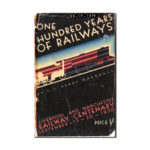Description
In 1800 there were some 1500 miles of primitive railways and tram roads in operation in Britain, the railways employing flanged wheels on edge rails, the tram roads using plain wheels on right angled iron plates, or even ruts carved out of stone slabs. Motive power was usually animal, or in some cases gravity and rope haulage by stationary steam engines. All these lines were private, single purpose, linking mines or quarries with navigable waterways for onward distribution of product. The stimulus to industry engendered by the wars against the French in the late 18th and early 19th centuries, combined with the high cost of horses and fodder because of demand from the army, caused the first use of primitive steam locomotives on some colliery lines, with the first really successful commercial application on the Middleton Railway, Leeds from 1812.
The years 1826 and 1827 were crucial in the development of the steam hauled public railway The S. and D. had been in operation for a year, while construction of the L. and M. was well under way. In the continent of Europe, ravaged by decades of belligerent armies ranging to and fro, science and technology had largely languished, while in Britain, these and other disciplines had developed. In the period after 1815, Europe, particularly the more advanced states like Prussia, looked to Britain to learn how to catch up.
Thus it was that two young Prussian engineers, von Oeynhausen (aged 31) and Von Dechen (aged26) were sent by the Prussian Ministry of the Interior, to investigate and report on, the new technology of steam railways. In fact their report is far more detailed than any surviving British account. Rather than being regarded as “spies” or even possible commercial rivals, they seem to have been welcomed and given any information that they asked for. The document seems to have been largely unknown in Britain until 1921, but was not fully translated until 1942.






Reviews
There are no reviews yet.